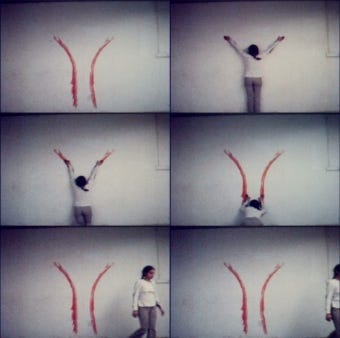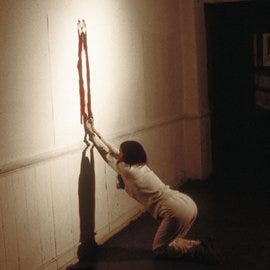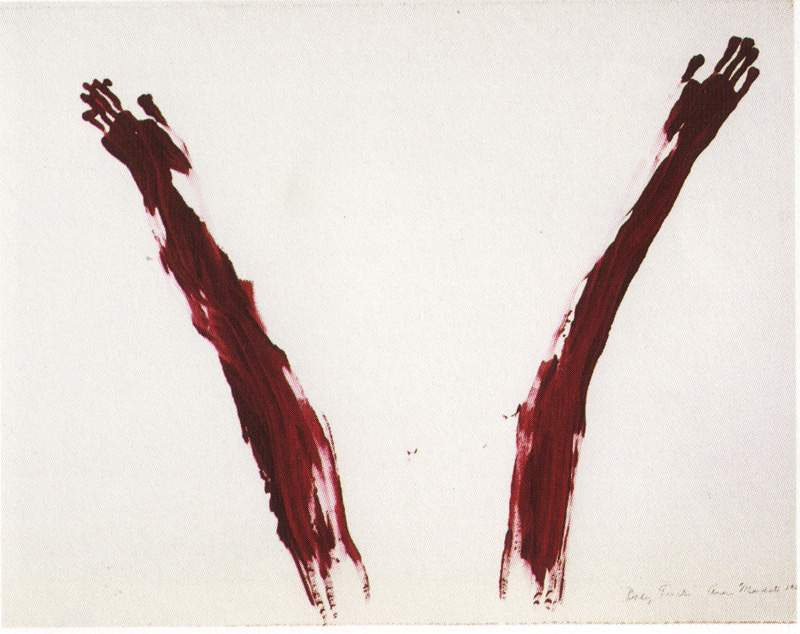It’s Autumn once more, well not technically, not until September 23rd according to Google, but the smell of already rotting leaves is in the air in Alberta or maybe that’s what I want to believe, what can I say, I like Halloween candy. I have decided to start writing here as a way to excise some of my academia ridden voices, keep up with imagined friends and regale y’all with tales of nonsense happenings. My moniker, Ol’Sister Killjoy comes from Ama Ata Aidoo’s seminal novella Our Sister Killjoy or Tales From a Black-eyed Squint. Published in 1972, Our Sister Killjoy is a fantastic example of early black feminist thought as well as postcolonial critique. Taking into account the jaundiced gaze or black-eyed squint with which the protagonist Sissie examines the world around her, I too want to critically look at the world around me and share it with you; the world that I usually experience through music, art, and writings. Here, I’ll share my thoughts as they are filtered through my black-eyed squint.
This past summer has been a somewhat inconsequential yet impactful summer for me. I graduated from Queen’s University with my master’s in Art History after some hellish years trying to come to terms with the sharpness of my own voice. To be honest I don’t think I’ve come to terms with the many voices that call themselves to me. This last statement may seem a little clinical but I promise you, it’s metaphorical or some other literary term for “please don’t think I’m too crazy.” I spent most of my summer wandering around the Edmonton River Valley, home to misfits, runners and a stretch of brown water we (Edmontonians) all love. I spent bright afternoons with my good friends MJP and Kristen, picnicking and talking about books and such. In early May, I went to New York to see my wee baby sister, Little Akosua (Yes, we have the same name and no she isn’t a wee baby she’s grown) and enjoy some fantastic exhibits including the Wangechi Mutu exhibit Intertwined at New Museum. I read a bunch of books and articles, some of which I’ll share with you and some that are not worth sharing. Finally, I looked for jobs in my field but found one in a liquor store instead, where I’m confronted with some great characters. Anyways, what I mean to say is welcome to another Substack newsletter run by an overly enthusiastic graduate with too little headspace. Here, I’ll share three things: My love of music, art, and reading/books and hopefully all three of my friends will read it. This week I spent time with Cuban-American artist Ana Mendieta’s work, watched a bunch of movies and as always listened to some fantastic music.
I have been thinking of transgressive female subjectivity lately, a subject that I am heavily invested in and interested in because I’m getting ready to apply for PhD programs and I’m writing up my proposal. Many people come to mind when I think of transgressive female subjectivity but none more so than Ana Mendieta (1948-1985), I spent the summer listening to a podcast, Death of An Artist, about Mendieta’s death which seems to obscure her brilliant practice of transgressive subjectivity so she’s been at the forefront of my mind for most if not all of this summer. One work by Mendieta that comes immediately to mind is Body Tracks (1982), I’ve attached fuzzy photographs below and on my instagram (@ol_sisterkilljoy). Performed in 1982, in Body Tracks Mendieta uses animal blood and tempera paint to create imprints of her hands on white paper, a silent gesture she repeated until she exited Franklin Furnace, the exhibition space, leaving her audience to examine her gestures marked in blood on the gallery walls. By making these tracks with her body, Mendieta silently and powerfully drew attention to violence against women while highlighting how the female body could be used as a transgressive tool against misogyny. Mendieta’s talent as a performer was/is glaring and arresting this is evident in Body Tracks and my inclusion of it here is a sort of homage to one of the leading women of radical gestures of transgressive female subjectivity.
Also taking place in 1980s was a revolution in music that would come to define a revered decade in punk, I’m talking about the D.C punk scene from 1980 to 1990. No too long ago, I watched Scott Crawford’s 2015 documentary Salad Days: A Decade of Punk in D.C (1980 to 1990) which explores the DIY bands of Washington D.C like Bad Brains, Minor Threat, and Dag Nasty, not to mention my favourite of them all Fugazi. In the 80s and 90s, these bands and other DIY punk bands were shifting the sonic landscape and shaping it into the rebellious undercurrent that came to define hardcore punk in the United States. I loved it so much I created a playlist which can be found here. Titled Salad Daze, it takes its name from both the documentary and the Minor Threat song Salad Days. The term which refers to a period of carefree innocence, idealism, and pleasure typically associated with youth is not only definitive of those early years of D.C but of this past summer, barring innocence. I hope you enjoy the playlist.
Your Sister Killjoy
Ana Mendieta (Cuban-American, 1948-1985)
Untitled (Body Tracks)
1982
Colour photograph, lifetime print
Collection of Igor DaCosta
© The Estate of Ana Mendieta Collection, L.L.C.
Courtesy Galerie Lelong, New York and Paris and Alison Jacques Gallery, London







👏🏾👏🏾👏🏾👏🏾👏🏾 go awfffff